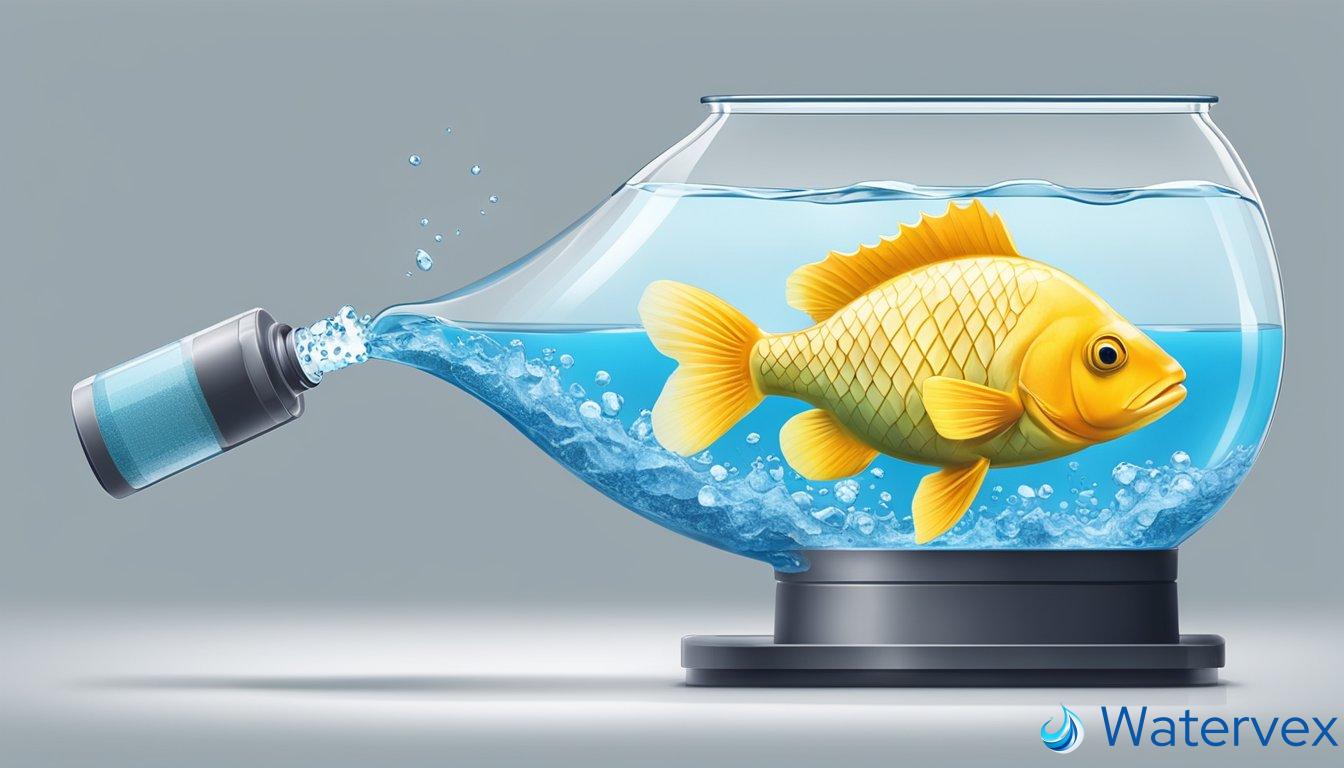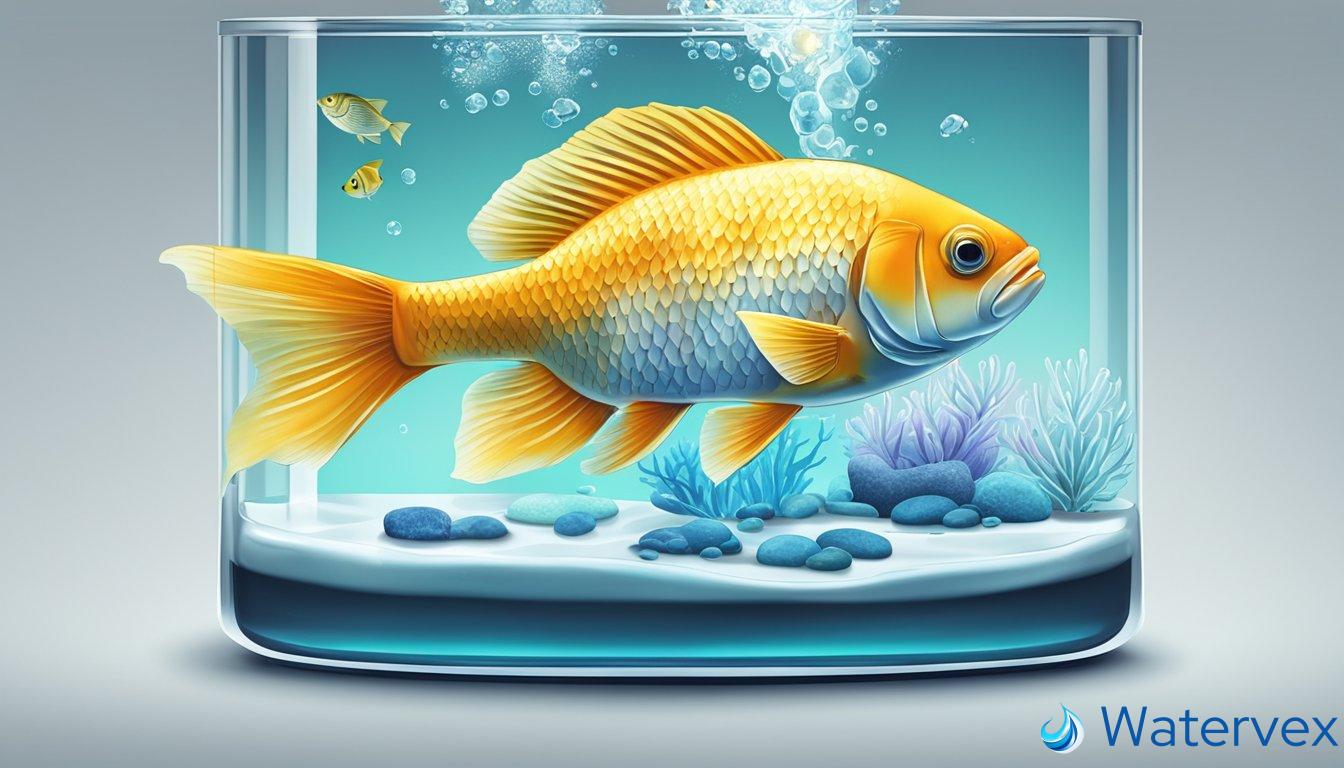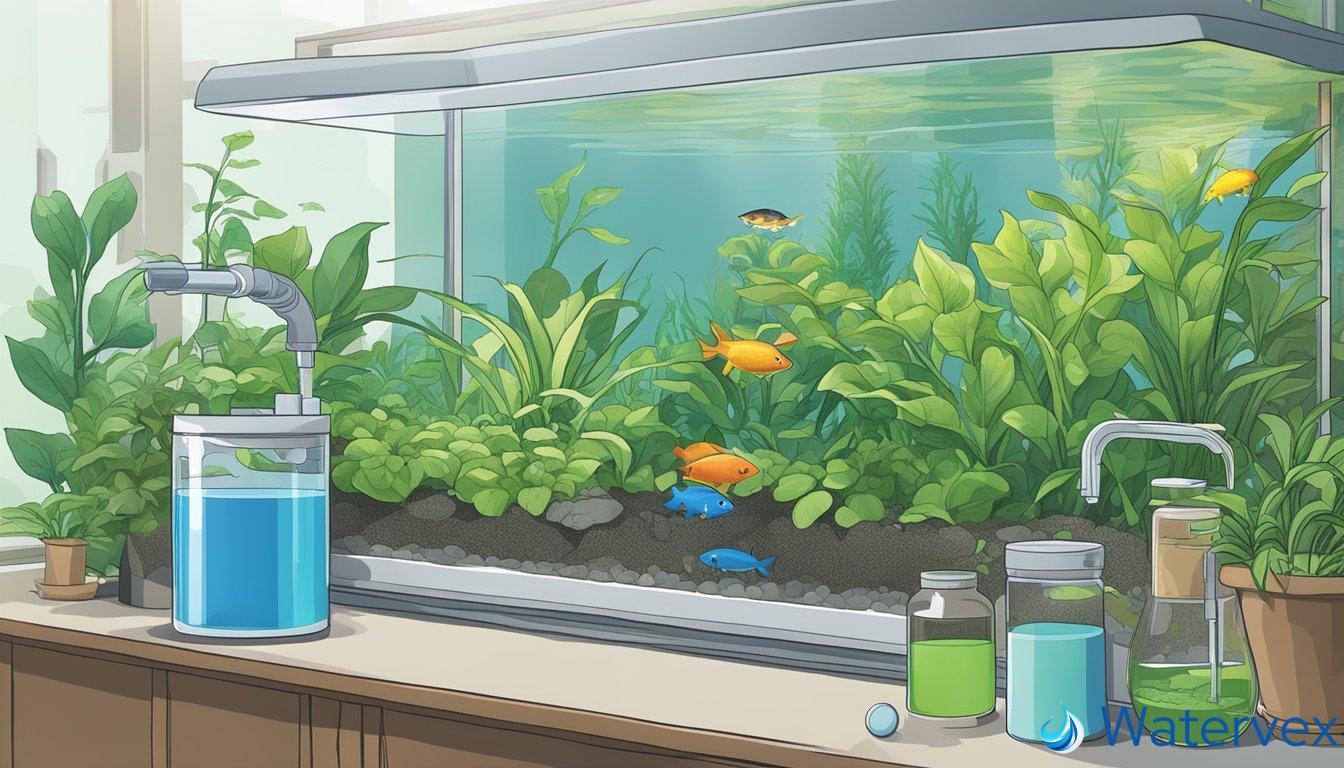When you’re trying to manage the water parameters in your freshwater aquarium, understanding how different products affect water chemistry is crucial. If you’ve pondered whether water conditioner can lower general hardness (GH), it’s vital to know that water conditioners are primarily used to make tap water safe for your fish. They work by neutralizing harmful chlorine and chloramines and can also bind to heavy metals present in tap water, making them non-toxic to your aquatic life. However, the impact on GH—a measure of calcium and magnesium in water—is not as straightforward.

The role of a water conditioner in altering GH is a topic of interest among aquarium enthusiasts. While some conditioners may advertise the ability to influence GH, it’s important to examine their ingredients and intended purpose. GH is essential for the health of your fish and plants, as it affects biological functions such as muscle activity and growth. Achieving the ideal GH balance involves a careful look at your aquarium’s needs and may require solutions beyond standard water conditioners.
Key Takeaways
- Water conditioners are designed to detoxify tap water, but their effect on GH is limited.
- GH levels are critical for fish health and require specific interventions to adjust.
- Understanding the exact needs of your freshwater aquarium is key to selecting the right products to maintain optimal water chemistry.
Impact of Water Conditioners on GH
When considering the intricacies of water chemistry, specifically in the realm of aquarium care, the focus often lands on the balance of minerals. Water conditioners are commonly used to manage the quality of aquarium water. Their impact on GH, or General Hardness, is a point of particular interest.
Reducing Calcium and Magnesium Levels
Water conditioners can play a role in modifying GH levels by targeting the ions responsible for water hardness. These ions are predominantly calcium (Ca²⁺) and magnesium (Mg²⁺). By altering the concentration of these minerals, a conditioner might adjust the GH. This process is crucial as it transforms hard water into softer water, which can be beneficial for your aquarium inhabitants that prefer less mineral-dense environments.
Understanding the GH in Aquariums
GH in aquariums is a measure of the total dissolved compounds of calcium and magnesium. This value is crucial because an imbalance can affect the overall health and biome of your aquarium. Understanding and keeping GH within the desired range are essential. If you find the GH in your aquarium water is too high, meaning the water is too hard, certain water conditioners designed to reduce mineral content might be beneficial.
Remember, the ideal GH level varies depending on the species of fish and plants in your aquarium. Always research and abide by the specific requirements of your aquatic life to maintain a thriving ecosystem.
Alternatives to Water Conditioners for Lowering GH

When dealing with high General Hardness (GH) in your aquarium, water conditioners are not your only option. Innovative and natural alternatives can effectively reduce GH, ensuring your fish thrive in a comfortable environment.
Exploring Water Changes and Reverse Osmosis
Water Change: A simple yet powerful method to lower GH is by performing water changes with softer water. Replace a portion of your tank’s water with distilled or deionized water, which has a reduced mineral content. For instance, if you’re striving to achieve GH levels conducive to Discus fish, you might replace up to 25% of the tank water with softer water appropriate for your fish.
Reverse Osmosis (RO): Reverse osmosis systems are renowned for their ability to purify water by removing a variety of contaminants, including minerals that contribute to GH. Incorporating an RO unit in your aquarium setup can consistently provide water with low GH, alleviating the hardness without chemical intervention.
Natural Methods to Adjust GH Levels
Peat Moss: Utilizing peat moss in your filtration system can naturally lower the GH as it releases tannins and binds with minerals. This process, called chelation, not only softens the water but can also lend a natural, slightly acidic PH that many fish species favor. Peat moss is also beneficial in releasing gallic acid that further contributes to the reduction of hardness.
Driftwood and Water Softening Pillows: Another popular choice is adding driftwood to your aquarium, which gradually releases tannins, softening the water. For a more immediate effect, water softening pillows are also effective. Filled with ions, these pillows exchange hard minerals like calcium and magnesium with softer ones, reducing both GH and carbonate hardness (KH). Over time, softening pillows and driftwood work in tandem to condition your aquarium water in a more natural and gradual way, maintaining stability which is crucial to the health of your aquatic inhabitants.
Aquarium Water Parameter Management

When you’re trying to maintain a balanced aquarium, understanding and managing water parameters is crucial. Water conditioners are a common tool for making tap water safe for fish by neutralizing toxins, but they don’t directly lower general hardness (GH). Instead, to reduce GH, you might need a different approach—exchanging some tank water with softer water or using a reverse osmosis (RO) system.
pH levels in aquariums swing from acidic to alkaline. Your water’s buffering capacity, measured as carbonate hardness (KH), influences pH stability. High KH levels resist pH changes, providing stability for your aquatic life, whereas low KH can lead to sudden pH shifts. Therefore, it’s vital to monitor and manage both KH and pH levels in tandem.
Aquariums with corals or certain fish, like discus, require specific GH and KH levels to thrive. For instance, soft water fish require lower GH levels, so mixing RO water to cut down the dissolved minerals like calcium and magnesium could be necessary.
Furthermore, impurities such as nitrate can accumulate over time. Regular partial water changes help in managing nitrate levels, which, if kept unchecked, can lead to unhealthy conditions for your fish and plants.
To summarize, a water conditioner may not alter your GH, but helps clear water of harmful substances like chlorine. Keeping an eye on dGH (degree of General Hardness) and dKH will assist you in creating an environment that aligns with your aquarium inhabitants’ needs. Regular testing is key, using a liquid test kit to measure the exact levels of GH, KH, and pH, adjusting accordingly with the proper water treatment methods.
- Testing: Regularly measure pH, KH, GH, and nitrate levels.
- Water Changes: Utilize softer water or RO water for dilution if GH is high.
- Stabilization: Aim for stable KH to avoid pH fluctuations.
- Impurity Control: Implement consistent water changes to manage nitrates.
Remember, achieving the right balance requires consistent monitoring and adjustments to ensure a healthy and thriving aquarium environment.

